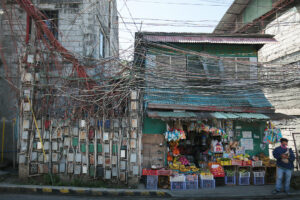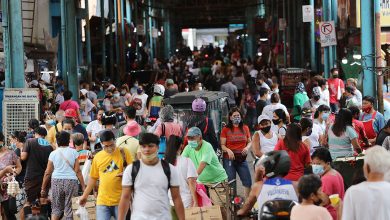Planning for more power

Various parts of Metro Manila suffered from power outages on Monday after five power plants shut down unexpectedly, while three others operated below capacity. The shutdowns were for various reasons, including a “balancing problem,” a “boiler tube leak,” and “generator vibration.” In the case of one hydrothermal plant, the forced outage was due to “low reservoir elevation.”
In the last three months I have written several columns on why consumers should start expecting more unscheduled and rotating power outages, or “brownouts” as they are known locally, this summer. Demand is obviously up, while supply has been unstable. Reserves are thin. And it takes only a handful of power plants conking out at the same time for outages to occur.
I have been critical of the government’s seeming lack of planning and foresight, and how we might soon find ourselves back in the “dark ages” of the early 1990s when a power shortage crippled the economy. Government has been pushing for “conservation,” while it has been talking up the “nuclear” option.
But obviously, nuclear power plants don’t get built overnight. For that matter, no major power plant can be put up quickly. Thus, any decision now to build new power generation facilities, whether running on coal or gas or renewables, will take much time to translate to actual power supply flowing through the grid. And the longer we wait, the bigger the problem becomes.
In late 2020, the Department of Energy (DoE) under the Duterte Administration said it would no longer give permits for the construction of new coal-fired power plants. At the same time, it said it would allow foreign investors to fully own big geothermal plant projects. Coal and oil are to be booted out by clean energy sources such as solar, wind, and other renewables.
As I had noted in a previous column, I totally agree with the plan to favor renewables over coal. I also consider nuclear an option. But the ban on coal might have to be reconsidered in the meantime, just to boost power reserves, and while the nuclear option is under study. Rising food and energy prices are the biggest contributors to inflation, which has been a lingering problem.
We should increase the share of renewables in the power supply mix and meet the government target of 50% by 2040. But power supply should also be stable, sustainable, and affordable. After all, lower energy prices benefit both consumers and producers, and drive economic growth. But the present ban on coal power plants may be preventing us from ensuring energy security.
We need solutions now, and urgently. Last month, Occidental Mindoro was placed under a state of calamity after it was hit by power interruptions that lasted as long as 20 hours a day. Soon, other parts of the country may start experiencing the same. Conservation can go only so far. We need to ramp up power supply, and fast.
As I had written in the past, the 1990s energy crisis was resolved not by conservation, as there was nothing to conserve at that point. It was actually fixed by a Congress that agreed to give the President emergency powers under the 1991 Energy Crisis Act to negotiate contracts for power generation. While the government put in imperfect solutions, they were sufficient at the time.
More than 30 years since, we again seem to find ourselves facing another power shortage. Even as the economy seems to be finally getting past the repercussions of the COVID pandemic, yet another problem looms to drag growth. We have been slow in addressing the issue, knowing fully well that lasting solutions to the power crisis take a lot of time and resources.
It is bad enough that consumers are now suffering from power outages. The unkinder cut is the fact that despite the outages, power prices are about to go up. Meralco said the rates in its franchise areas were likely to rise this month on higher generation charge, with higher demand driving up prices in the electricity spot market.
Average electricity prices for Luzon and the Visayas in the electricity spot market rose to P7.68 per kilowatt-hour as of April 23 from P6.57 per kwh in the March billing period. Meralco also pointed to the peso’s depreciation, the last installment of deferred costs, and an increase in the Universal Charge for Missionary Electrification, as ordered by the Energy Regulatory Commission, as factors contributing to the price hike.
The Philippine Nuclear Research Institute is of the mind that renewable energy would not be enough, and the country’s power supply mix must be complemented with nuclear power. The Malampaya gas field, for one, which is the only indigenous commercial source of natural gas, will be commercially depleted by 2024. In consideration now are small modular reactor (SMR) facilities particularly for islands like Occidental Mindoro and Palawan.
Should we go all out on nuclear now, or should we reconsider meantime suspended coal-fired power projects? Semirara Mining and Power Corp. (SMPC), for one, is reportedly considering restarting its San Raphael coal-fired power project in Batangas, which was suspended in 2020 just as the pandemic took a turn for the worse. This project’s advantage is that Semirara mines its own coal.
A number of proposals have been voiced by stakeholders, including allowing electric cooperatives to generate their own power or through joint ventures, rather than just buying from private suppliers. Also proposed was allowing the national and local governments to generate power on their own, rather than leaving everything to the private sector.
There have been calls as well for the regulation of power generation, noting that a deregulated generation sector has been resulting in an imbalance in the power industry, and stymie or impede efforts to bring down electricity cost. To date, distribution utilities such as electric cooperatives buy power from generation companies or the spot market and pass on the cost – even if high – to consumers and charge VAT on top of that. Of these proposals, it doesn’t seem like anything is in the works. Why?
NEDA Secretary Arsenio Balisacan reported previously that economic growth was hobbled by high prices of goods and services, including fuel and power. He emphasized the need to temper increases in food and energy prices. But how can we do that if supply, in the case of both food and energy, is always short and insufficient to meet demand?
Marvin Tort is a former managing editor of BusinessWorld, and a former chairman of the Philippine Press Council




